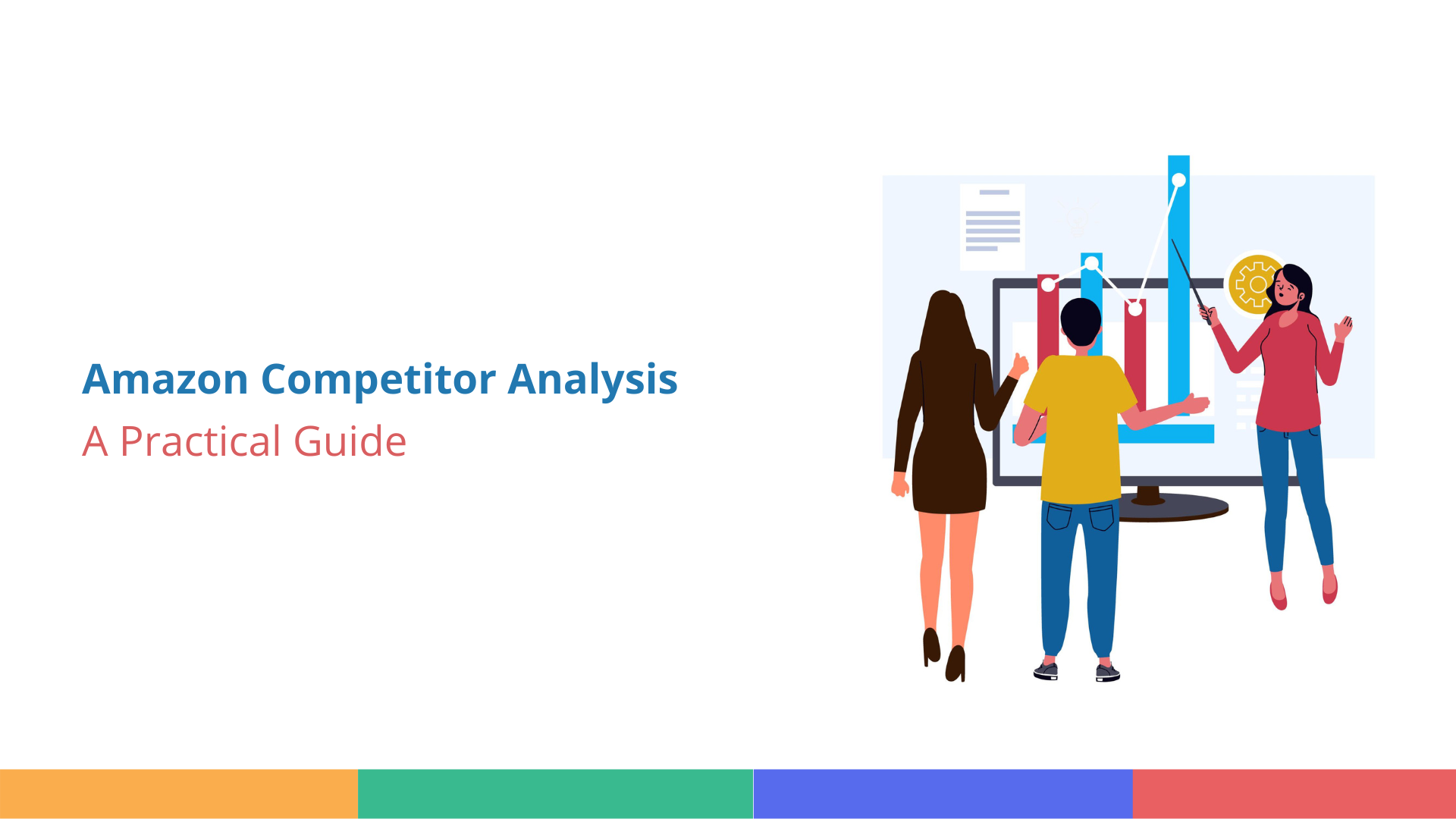With millions of products vying for attention, a comprehensive competitor analysis provides valuable insights into identifying opportunities and crafting a winning strategy.
This guide will provide a good idea of competitor analysis in the Amazon marketplace environment.
An Amazon Competitor Analysis: Is It Really Worth the Effort?
Conducting a thorough Amazon competitor analysis may seem like a daunting task, especially when you’re already juggling numerous responsibilities as a seller. You might be tempted to skip this step, but doing so could be a costly mistake in the highly competitive Amazon marketplace.
The truth is that investing time and effort into researching your competition offers a wealth of advantages that can significantly impact your business’s success. Here are some compelling reasons why an Amazon competitor analysis is an invaluable exercise:
1. Competitive Pricing and Promotions Strategy
One of the primary benefits of a competitor analysis is ensuring your pricing strategy is competitive and aligned with market demands. By studying your competitors’ pricing strategies, including discounts, bundled offers, or promotions, you can make informed decisions about your pricing. This helps you strike the right balance between profitability and attractiveness to potential customers.
Pro Tip: Monitor pricing changes to identify patterns or seasonal adjustments, informing your pricing strategy and promotional calendar. You can use Keepa Amazon price tracking tool for the purpose.
2. Differentiate Your Product and Message
In a crowded marketplace, standing out from the competition is crucial. Competitor analysis provides insights into how your rivals position and market their products, allowing you to identify opportunities to differentiate your offering and tailor your messaging to effectively highlight your unique selling points.
3. Informed Sourcing Decisions
Expanding your product portfolio is a common growth strategy for Amazon sellers. However, blindly adding new products without researching the competition can lead to costly mistakes. Competitor analysis helps you make accurate sourcing choices by identifying gaps in the market, understanding demand levels, and assessing the competitive landscape before investing in new products.
4. Monitor Performance and Profitability
Keeping tabs on your competitors’ performance metrics, such as sales velocity, inventory levels, and Buy Box share, can provide valuable insights into their profitability and overall market share. Armed with this knowledge, you can make data-driven decisions to optimize your strategies, pricing, and marketing efforts, ultimately driving better profitability for your business.
5. Identify Your Amazon Competitors
Start by searching for products similar to yours on Amazon. List the top results, as these are likely your major competitors. Use Amazon’s search suggestions and “Customers also bought” sections to uncover other potential rivals, including smaller niche sellers that may pose a threat.
Pro Tip: Utilize tools like Sellics and Jungle Scout to gather information about your competitors, including sales, best sales rank, keyword ranking, and more
6. Analyze Product Listings
Evaluate your competitors’ product titles, descriptions, and images. Look for patterns in how they highlight features, benefits, and unique selling points. This insight can help you craft a compelling product description that differentiates your offering.
For example, if you sell fitness trackers, analyze how competitors highlight battery life, water resistance, and app compatibility. Use this knowledge to emphasize your product’s advantages over competitors.
7. Leverage Customer Reviews
Customer reviews provide a wealth of information about your competitors’ products. Analyze both positive and negative reviews to understand strengths, weaknesses, and areas for improvement.
Pro Tip: If a competitor’s product has recurring complaints about poor battery life, highlight your product’s superior battery performance in your marketing.
8. Monitor Marketing Efforts
A strong online presence is essential. Monitor your competitors’ marketing efforts across various channels, including Amazon Advertising, social media, and external traffic sources like affiliate marketing or influencer collaborations.
ProTip: Use tools like Keyword Inspector to analyze your competitors’ Amazon Advertising campaigns and identify successful keywords and strategies.
9. Track Performance Metrics
Keep a close eye on your competitors’ performance metrics, such as Best Seller Rank (BSR), sales velocity, inventory levels, and Amazon Buy Box share. These insights can reveal their sales volume, growth trajectories, and market share.
Pro Tip: Set up alerts to monitor significant changes in your competitors’ BSR or pricing, allowing you to respond quickly to market shifts. Use tools like Keepa to observe BSR fluctuations or Jungle Scout to check inventory levels.
10. Identify Opportunities and Threats
With a comprehensive understanding of your competitors’ strengths, weaknesses, and strategies, identify potential opportunities and threats for your business. Look for areas to differentiate your product or brand and develop a unique value proposition that resonates with your target audience.
Pro Tip: Conduct a SWOT analysis (Strengths, Weaknesses, Opportunities, Threats) to gain a clear picture of your competitive landscape and inform your strategic planning.
11. Leverage Tools and Resources
While manual research is valuable, leverage tools and resources to streamline and enhance your competitor analysis efforts. Use Amazon-specific tools like Jungle Scout, Helium 10, or Viral Launch for deeper insights into your competitors’ performance.
Pro Tip: Join online communities and forums for Amazon sellers to stay up-to-date with the latest trends, strategies, and best practices in the ever-evolving Amazon marketplace.
Conclusion
Remember, competitor analysis is an ongoing process, not a one-time event. Continuously monitor your competitors’ activities, adapt your strategies, and embrace innovation to maintain a sustainable competitive advantage.




